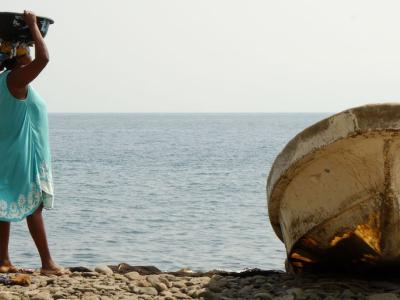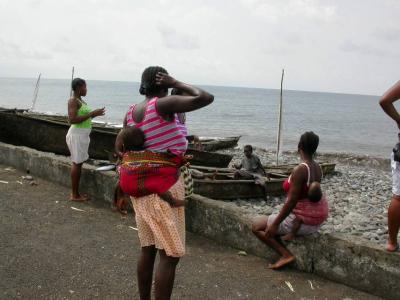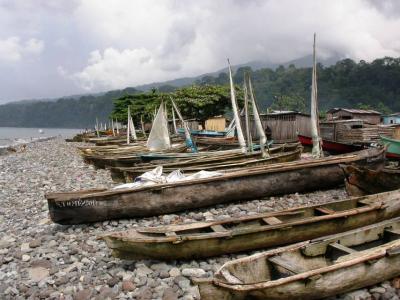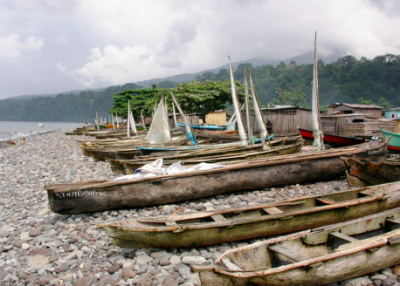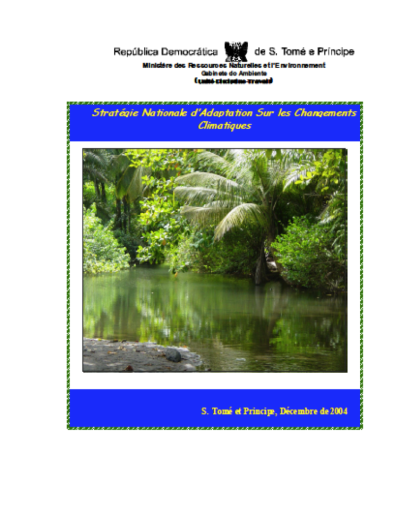Sao Tome and Principe

In São Tomé and Príncipe appropriate solutions for adaptation to climate change do exist. The country is rich in water resources and it possesses a dense tropical forest; however, according to the December 2007 National Adaptation Programme of Action, those resources are being very badly managed, putting at risk the survival of the future generation and the country.
Following the selection and prioritisation of options, adaptation measures for São Tomé and Príncipe have as their objective the improvement of life of the most vulnerable populations of country, endowing the capacity to minimize the disastrous effects of climate change and poverty reduction.
The Democratic Republic of São Tomé and Príncipe is an archipelago constituted by two main islands and four islets, located in the Golf of Guinea, between the latitudes of 0° 01'Sul and 1° 43 ' North and longitudes of 6° 28 ' and 7° 28 ' East.
The islands of São Tomé and Príncipe are respectively about 360 and 269 km off the Western coast of Africa continent. Príncipe is located 160 km to north of São Tomé. The area of the country is 1.001 km2, being 859 km2 for São Tomé island and 142 km2 for the island of Príncipe. The population is approximately 137.599 inhabitants (R.G.P.H.) in 2001. The population is essentially young, 79% with less than 35 years and is predominantly urban.
These islands present a humid tropical climate, with abundant rains almost the whole year, with the exception of the months of June to August, corresponding to the period of the "gravana", where a decrease of the precipitation and temperature are verified, with winds blowing from the south-southwest quadrant. Due to the characteristics of the relief, many micro-climates prevail, being observed above all in the highest parts, areas with high rainfall.
The country has considerable resources of superficial water, distributed in an irregular pattern in the whole territory, but with a predominance in the southern area that is the least inhabited. The temperatures are equally influenced by the relief, even though it has been recognized that important variations in the increase from the highest areas to the lowest ones. As an example :( average of the day) Lagoa Amélia (1488 m):18, 4° C; Monte Café (690 m):22, 4ºC; Airport (8m):26, 2ºC. The humidity is also very high, and can reach at Lagoa Amélia an average of 92% during almost the whole year, and being less high in the areas of lower altitude, varying between 70 and 80% along the year.
Surface sea temperature averages 27ºC. Salinity averages a concentration of 35 parts per 1000, of which 27 are of sodium chloride and the remainder constituted of magnesium, calcium and potassium. As a result, our sea has a basic characteristic (PH = 8).

